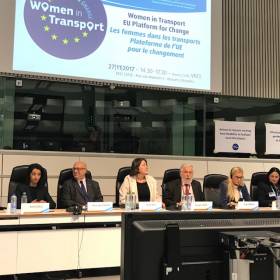Displaying items by tag: EU launch
ESPO Participates in Launch of EU Platform “Women In Transport”
#WomenInTransport - The EU Commission and the Economic and Social Committee launched on Monday a new platform aiming at strengthening Women’s employment and equal opportunities for men and women in the transport sector.
Only 22% of the people working in the transport sector are women. In waterborne transport, it is only 20%.
The specific objectives of the platform are to improve the opportunities for women in management and decision making, to improve the working conditions for women in the transport sector and to change the culture.
European Sea Ports Organisation (ESPO) is one of the participating organisations in the platform and thus member of the platform.
To take the message forward, ESPO intends to bring together the human resource managers of European ports not only to discuss recruitment policies, but also to exchange possible best practices and see if any lessons can be learnt.
Next to being a member of the Platform, transport organisations can sign the Declaration. More information about the Platform and the Declaration can be found here:
In another notable development according to ESPO was the EU Parliament and Council in Reaching an agreement on Shipping's CO2 Emissions
The agreement reached earlier this month is in regard to the CO2 emissions from shipping that was agreed to align any EU action with the International Maritime Organisation (IMO) timeline.
This compromise is a part of the first reading agreement on the review of the EU Emission Trading Scheme (ETS) Directive. The agreed text wants the IMO to introduce an ambitious emission reduction target and accompanying measures by 2023.
In particular, the agreement sets two milestones by saying that an IMO emission reduction target in 2018 as part of its initial strategy has become a matter of urgency and that action either at IMO or EU should start from 2023.





























































